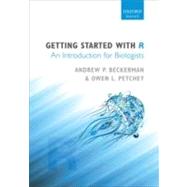
| Preface | p. vii |
| What this book is about | p. vii |
| What you need to know to make this book work for you | p. viii |
| How the book is organized | p. ix |
| Why R? | p. 1 |
| Import, Explore, Graph I-Getting Started | p. 5 |
| Where to put your data | p. 7 |
| Make a folder for your instructions (code, script) | p. 10 |
| How to get your data into R and where it is stored in R's brain | p. 10 |
| Working with R-hints for a successful first (and more) interaction | p. 11 |
| Make your first script file | p. 15 |
| Starting to control R | p. 18 |
| Making R work for you-developing a workflow | p. 19 |
| And finally… | p. 21 |
| Import, Explore, Graph II-Importing and Exploring | p. 23 |
| Getting your data into R | p. 23 |
| Checking that your data is your data | p. 26 |
| Summarizing your data-quick version | p. 28 |
| How to isolate, find, and grab parts of your data-I | p. 28 |
| How to isolate, find, and grab parts of your data-II | p. 30 |
| Aggregation and how to use a help file | p. 31 |
| What your first script might look like (what you should now know) | p. 35 |
| Import, Explore, Graph III-Graphs | p. 39 |
| The first step in data analysis-making a picture | p. 39 |
| Making a picture-bar graphs | p. 40 |
| Pimp my barplot | p. 44 |
| Making a picture-scatterplots | p. 50 |
| Pimp my scatterplot: axis labels | p. 53 |
| Pimp my scatterplot: points | p. 54 |
| Pimp my scatterplot: colours (and groups) | p. 56 |
| Pimp my scatterplot: legend | p. 59 |
| Plotting extras: pdfs, layout, and the lattice package | p. 64 |
| Doing your Statistic in R-Getting Started | p. 65 |
| Chi-square | p. 66 |
| Two sample t-test | p. 70 |
| The first step: plot your data | p. 72 |
| The two sample t-test analysis | p. 76 |
| General linear models | p. 77 |
| Always start with a picture | p. 78 |
| Potential statistical and biological hypotheses-it's all about lines | p. 80 |
| Specifying the model | p. 83 |
| Plot, model, then assumptions | p. 84 |
| Interpretation | p. 86 |
| Treatment contrasts and coefficients | p. 89 |
| Interpretation | p. 89 |
| Making a publication quality figure | p. 92 |
| Coefficients, lines, and lines() | p. 93 |
| Expanded grids, prediction, and a more generic model plotting method | p. 94 |
| The final picture | p. 99 |
| An analysis workflow | p. 101 |
| Final Comments and Encouragement | p. 105 |
| Appendix: References and Datasets | p. 109 |
| Index | p. 111 |
| Table of Contents provided by Ingram. All Rights Reserved. |
The New copy of this book will include any supplemental materials advertised. Please check the title of the book to determine if it should include any access cards, study guides, lab manuals, CDs, etc.
The Used, Rental and eBook copies of this book are not guaranteed to include any supplemental materials. Typically, only the book itself is included. This is true even if the title states it includes any access cards, study guides, lab manuals, CDs, etc.